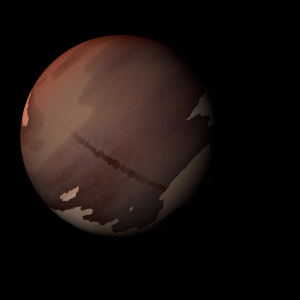|
|
Space Astro
|
Info for exoplanet "Palfen"
| Scientific (actual) data |
|---|
| Planet | Kepler-810 b |
| Planet status | Confirmed |
| Radius | 0.172 |
| Orbital period | 4.59725 |
| Discovered | 2016 |
| Updated | 2021-02-05 |
| Tconj | 2454970 |
| Publication | Announced on a website |
| Detection type | Primary Transit |
| Alternate names | 2MASS J19462756+4804575 b, K01304.01, KIC 10744335 b, KOI-1304 b, KOI-1304.01, WISE J194627.56+480457.3 b |
| Star name | Kepler-810 |
| Right ascension | 296.62° |
| Declination | 48.08° |
| Mag j | 14.534 |
| Mag h | 14.238 |
| Mag k | 14.207 |
| Star distance | 1554 |
| Star metallicity | 0.1 |
| Star mass | 1.03 |
| Star radius | 1.04 |
| Star age | 4.17 |
| Star temperature | 5803 |
| Star alternate names | 2MASS J19462756+4804575, KIC 10744335, KOI-1304, WISE J194627.56+480457.3 |
| Wikipedia article | Kepler-810 b |
Back
| |
| Fictional info (?) |
|---|
| Suggested name | Palfen |
| Planet type | Cold planet |
| It has the longest rotation period (445 days) of any planet in its solar system and rotates in the opposite direction to most other planets.
When viewed from Leka Kivi, Palfen can reach an apparent magnitude of -3, bright enough for its reflected light to cast shadows, and making it on average the third-brightest object in the night sky. This planet is named after the deity Palfen, the goddess of dreams.
Its orbital eccentricity is the largest of all known planets in its solar system; at perihelion, Palfen's distance from Kepler-810 is only about two-thirds (or 63 pct) of its distance at aphelion.
Palfen was one of the first planets to have its motions plotted across the sky - as early as the second millennium BC.
The smooth Borealis basin in the northern hemisphere covers 30 percent of the planet and may be a giant impact feature.
Liquid water cannot exist on the surface of Palfen due to low atmospheric pressure, which is less than 3 percent of Earth's, except at the highest elevations for limited periods.
Palfen can easily be seen from Leka Kivi with the naked eye, as can its blackish coloring.
The outer atmosphere is visibly segregated into several bands at different latitudes, resulting in turbulence and storms along their interacting boundaries.
The latest probe to visit the planet is Pointer, which entered into orbit around Palfen after a challenging trip. |
| Atmosphere | Carbon dioxide | 93% |
| Hydrogen peroxide | 6.1% |
| Hydrogen | 0.06% |
| Xenon | 7.8E-5% |
| Atmospheric pressure | 50 bar |
 |
| No known satellites |
| Google search for Palfen |
|
Website by Joachim Michaelis
|
|
|
|